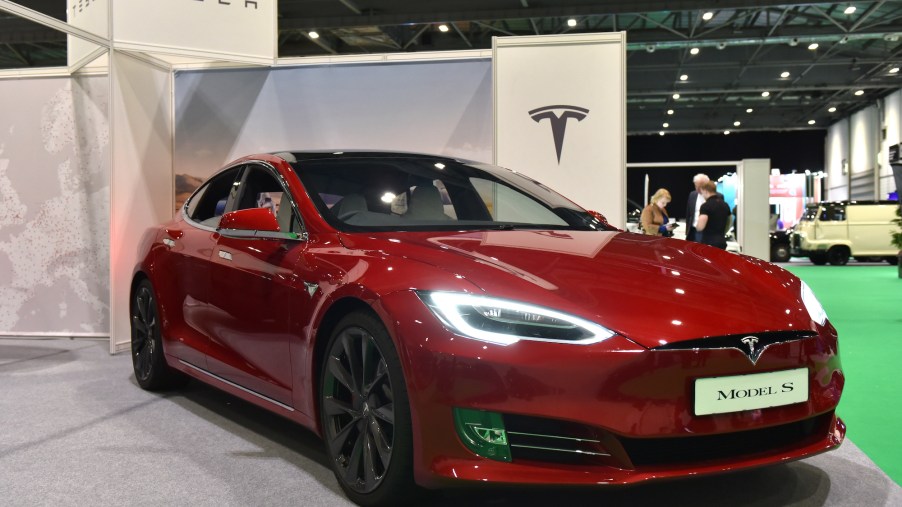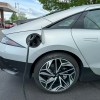
Is the Tesla Model S Worth $60,000 Over the Model Y?
No stranger to controversy, Tesla CEO Elon Musk seems to get a kick out of rubbing people the wrong way. However, Musk has single-mindedly (rather than single-handedly) reshaped not only the world as we know it but also the future. While the Roadster has its place in history, the Tesla Model S transformed how the world views electric vehicles. Then there’s the Model Y.
The Tesla Model S and Model Y in a nutshell
Asked to compare any two Tesla vehicles, most people might pick the Model X and Model Y because they’re crossover SUVs. Or maybe they’d choose the Model Y and its inspiration, the Model 3. But to do so would be to ignore the elephant in the room: What does the Model S offer that’s worth $60,000 over the Model Y? It’s something to consider as a growing number of other automakers begin offering BEVs with near-equal range and performance. Not only that, but it’s also likely they’ll offer snazzier interiors.
Price
The Model S Plaid and Model Y Performance are both top-level trims. That will change, however, when Tesla adds the Model S Plaid+. The Plaid starts at $119,990, and the Performance starts at $60,990. The former is a five-passenger sedan, while the latter is a seven-passenger crossover. As an SUV, the Model Y focuses on utility rather than performance (though it outperforms most crossovers in its class. Per Tesla, its independent electric motors “digitally control torque to the front and rear wheels — for far better handling, traction and stability control.”
Power
Both models have dual-motor all-wheel-drive systems. But the Model S can produce a whopping 1,020 hp compared to the Performance’s 384 hp. The former has an EPA-estimated 390-mile range, while the latter has a 303-mile range. The Model S Plaid accelerates from 0 to 60 mph in 1.9 seconds and tops out at 200 mph. The Model Y Performance can go from 0 to 60 in 3.5 seconds and reach 155 mph.
Interior
Tesla EVs mostly share the same driver-assist and safety features, with slight differences here and there. For example, the Model S has a 17-inch touchscreen, while the Model Y’s measures 15 inches. This might be why the brand seems to accentuate range and performance to differentiate models and assumed value.
Cargo space is slightly above the industry average for the Model Y. But the Plaid sedan provides 28 cubic feet, significantly over the industry average.
Will the Tesla Model S end up ‘Plaid’ out?
It’s interesting to know that the German manufacturer Daimler AG (Mercedes-Benz’s parent) purchased a nearly 10 percent stake in Tesla in 2009, Reuters reports. Not only did this give Musk’s fledgling startup a $50 million lifeline but also essentially allowed Tesla to use Mercedes engineers to assist in developing the Model S. Thus, in a way, the Model S has traces of Mercedes-Benz DNA coursing through its mainframe.
To put that into perspective, Musk had nearly 135 years of automobile designing expertise advising him. But Mercedes only announced its own long-range electric vehicle in September 2018. The Mercedes-Benz EQC is an all-electric SUV scheduled for release this year in select countries. Starting around $69,000, it will have an EPA-estimated range of roughly 282 miles per charge and accelerate from 0 to 60 mpg in 5.1 seconds.
Its interior photos make the Model S’s cabin seem as bland as a cardboard box. Most important, the EQC’s price doesn’t exceed $78,000. But Autoblog recently reported that due to “market developments,” Mercedes won’t offer the EQC stateside “for now.”
It doesn’t take Tesla economics
Would you like to know how to measure your success as a businessperson, as a disrupter, as an innovator, as a trendsetter? Well, someone at Investopedia figured you might be interested in “The Economics of Owning a Tesla Car.” To be specific, it’s dedicated to convincing you that blowing $80,000 on a Model S will help you stretch that 401(k) a lot further.
Of course, logic says you’ll recoup your investment over time by saving money on fuel and mechanical costs. But why does Investopedia’s suspiciously brand-centric article make it seem as if only the Model S would work for this so-called economic strategy?
In any case, whether you bought the $39,990 Model Y Standard Range or $119,000 Model S Plaid, the same Tesla “economics” apply. The huge difference with the former choice is that you recoup your investment much quicker. Moreover, you could buy plenty of other stuff with that additional $80,000 — like Tesla stock. While we’re at it, you could apply the same economics to any EV on the market today. Thus, in keeping with the core philosophy behind EVs and BEVs, paying near or over $100,000, for one, is counterintuitive.


